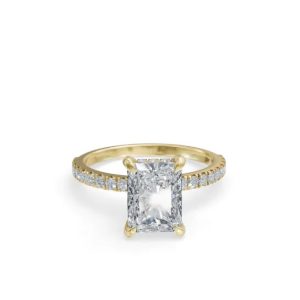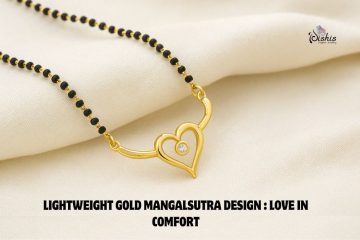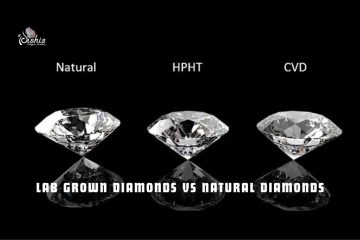With their ethical sourcing and breathtaking beauty, lab grown diamonds have reshaped the jewelry industry. However, many consumers aren’t aware of the different treatment processes that these synthetic diamonds undergo after they are first created. Knowing about lab-grown diamond treatments is essential for making informed purchasing decisions and understanding the technology behind these remarkable gems.

What Are The Lab-Grown Diamond Treatments?
Lab grown diamond treatments are post-formation enhancement processes applied to lab-grown diamonds after they have been grown. These treatment processes are designed to enhance the diamond’s overall appearance, color, and clarity. Post-growth treatments are utilized to improve some of the characteristics of a lab-grown diamond, which may not be of the desired quality or aesthetics.
The treatment process comprises applying extra processes to the already-grown diamonds, where the physical and optical properties of the diamonds are changed. These improvements are capable of reprocessing diamonds with a lower value into diamonds with commercial value.
Main Ways of Synthetic Diamonds Production
Before we get into treatments, it’s important to know how lab grown diamonds are first created. There are two primary methods for producing lab-grown diamonds: the high-pressure/high-temperature process (HPHT) and chemical vapor deposition (CVD).
High Pressure High Temperature (HPHT) Process
The HPHT technique simulates the conditions in which diamonds form naturally within the Earth’s interior. The process involves the addition of a carbon source to a special chamber that provides the ideal conditions for diamond crystallisation with extreme pressure and temperature.
Chemical Vapor Deposition (CVD) Process
CVD diamonds are produced using a different method in which carbon-rich gases are decomposed in a controlled chamber, which allows carbon atoms to crystallize out, layer by layer, onto a diamond seed. CVD is becoming more popular for the manufacture of gem-quality synthetic diamonds for jewellery.
Common Lab Grown Diamond Treatment Techniques
HPHT Treatment for Improvement
Most laboratory-grown diamonds passing through GIA’s laboratories are grown using CVD, and most are treated post-growth with HPHT to remove their color. This post-growth HPHT treatment is different from the original growth process and is only an enhancement technique.
The HPHT enhancement process requires the already formed diamond to be put back in a high-pressure, high-temperature environment. In the treatment, the diamond is placed in a high-pressure, high-temperature chamber. This extra exposure removes unwanted colour tints and enhances the overall appearance of the diamond.
Annealing Treatment
Annealing is one of the most popular treatment techniques for lab-grown diamonds. This heat treatment process is carried out in a tightly controlled atmosphere in order to effect certain desired improvements in diamond quality.
Controlled atmospheric heat treatment is the most successful color removal treatment that converts most CVD diamonds into colorless or near-colorless diamonds. The annealing process works especially well on CVD diamonds that tend to have brown or gray tinting after their initial growth.
Color Treatments
Special color enhancement treatments are used for most laboratory-grown diamonds in order to enhance the desired color. These techniques can both remove unwanted colours or create fancy diamond colours with precise tints.
Irradiation and Annealing: For fancy colored diamonds, combined treatments that involve irradiation and then annealing can create deep colors that are in high demand on the market.
Why CVD Diamonds Have to be Treated?
CVD diamonds increasingly require post-growth treatment because of the inherent nature of the growth process. During the process of growth, lattice dislocations will cause the CVD diamond to turn brown, and the physical method of HPHT can be used to recover it.
Brown discoloration is a common characteristic in as-grown CVD diamonds and is caused by structural defects that are formed during deposition. These lattice dislocations can be healed by controlled HPHT treatment, producing greatly improved color grades.
How Science Works In CVD Treatment?
After growth, some CVD grown diamonds have a brown color. As with natural brown diamonds, CVD-grown diamonds can be treated using HPHT processes to decrease or eliminate the brown coloration. What this treatment does is to restructure the crystal structure on the molecular level, clearing out the defects that cause undesirable coloration.
Detection and Disclosure of Treatment
Modern gemological laboratories with advanced equipment can reveal the treated laboratory-grown diamonds. The treatment can be discovered only by advanced instrumentation. Professional grading reports will normally reveal any treatments that diamonds have undergone.
Reputable manufacturers and sellers give full disclosure on treatment processes. This transparency enables consumers to make informed decisions based on their preferences and budget considerations.
As Grown vs. Treated Lab Diamonds
The jewelry industry has coined the term as-grown to differentiate treated diamonds from untreated lab-grown diamonds. When a lab-grown seller claims their diamonds are ‘as-grown,’ they are letting you know that the diamond was grown, cu,t and polished – no post-growth processing involved.
As-grown diamonds are those that have not undergone any enhancement treatment after the stone has been initially created. These diamonds have full disclosure on their natural growth characteristics; however, they do not necessarily get the highest color grades.
Benefits of Synthetic Gemstone Diamond Treatments
Enhanced Color Quality
Even diamond color grades will be improved dramatically with the help of treatment processes. A lot of CVD diamonds that show brown or gray tints can be turned into colorless or near-colorless stones by following the right treatment protocols.
Improved Market Value
The processed lab-grown diamonds tend to fetch a higher price as compared to their as-grown counterparts because of better color and clarity attributes. The improved appearance makes these stones more attractive to consumers who want a classic diamond appearance.
The Quality Is Consistent
Treatment processes ensure that manufacturers are able to implement uniform quality standards throughout their diamond stock. This quality gives retailers and consumers an advantage in terms of well-defined gem characteristics.
Tips When Shopping for Treated Lab-Grown Diamonds
Permanently vs. Temporarily
This method is permanent to enhance the CVD diamond color. Most lab-grown diamond treatments teach permanent effects that won’t fade or wear away with normal wear and tear.
Potential Concerns
Harsh heating and pressure applied during the formation of CVD diamonds may cause small inclusions, such as graining, to close and colour traces to disappear. While treatments tend to enhance diamond appearance, some jewelers favor as-grown stones because of the potential effects of structural changes.
Value Considerations
As a final note, consumers should realize that lab-grown diamonds that have been treated may have different value propositions than as-grown ones. While some shoppers are drawn to the natural beauty of untreated stones, others value the enhanced appearance that treatments can offer.
Future of Lab-Created Diamond Treatments
Lab-grown diamond treatments are a fast-changing field. Researchers are working on new improvement techniques that can produce even better performances, with a low impact on diamond structure.
The quality is controlled: modern treatment facilities have very sophisticated monitoring systems to ensure constant treatment results and to uphold the quality standards. These technological advancements make treated lab-grown diamonds more predictable and reliable, both for manufacturers and consumers alike.
Quality Certification and Grading
Major gemological institutes are now issuing comprehensive grading reports of treated lab-grown diamonds. These certificates contain relevant information regarding any treatments that have been used in their production, which enables consumers to understand precisely what they are buying.
Professional grading helps to set industry standards for lab-created gem diamonds and offers the transparency that today’s consumers expect from their jewelry purchases.
Making Smart Buying Decisions
When shopping for lab-grown diamonds, consumers should ask certain questions about treatment history. By understanding the origin of the diamond, be it as-grown or treated, buyers can make purchases that align with their personal preferences and values.
Detailed information on everything involved in the treatment process: Reputable sellers provide detailed information about all the characteristics of the treatment process, including explanations on how these procedures impact diamond characteristics. This information helps consumers make informed purchasing decisions based on accurate information.
Treatment effect on diamond performance
In general, however, lab-grown diamond treatments do not impact on the underlying properties that make diamonds valuable for jewellery applications. Treated diamonds retain their outstanding hardness, brilliance, and durability that consumers require of a high-quality gemstone.
Conclusion
Lab-grown diamond treatments are advanced technological processes that elevate the natural beauty of lab-grown diamonds. By understanding these enhancement techniques, consumers can make informed choices and appreciate the cutting-edge science behind today’s diamonds.
Whether opting for as-grown or treated lab grown diamonds, buyers can have a clear conscience knowing they are choosing ethically sourced, eco-friendly alternatives to mined diamonds. The treatment processes ensure that lab-grown diamonds can be of the highest quality while still holding on to their fundamental beauty as stunning and long-lasting gemstones.
Increased transparency in treatment processes gives today’s consumers the power to choose diamonds that best meet their tastes, values, and budgetary needs. As technology advances, we can expect lab grown diamond treatments to become even more refined, providing consumers with even more beautiful and affordable diamond options.



0 Comments